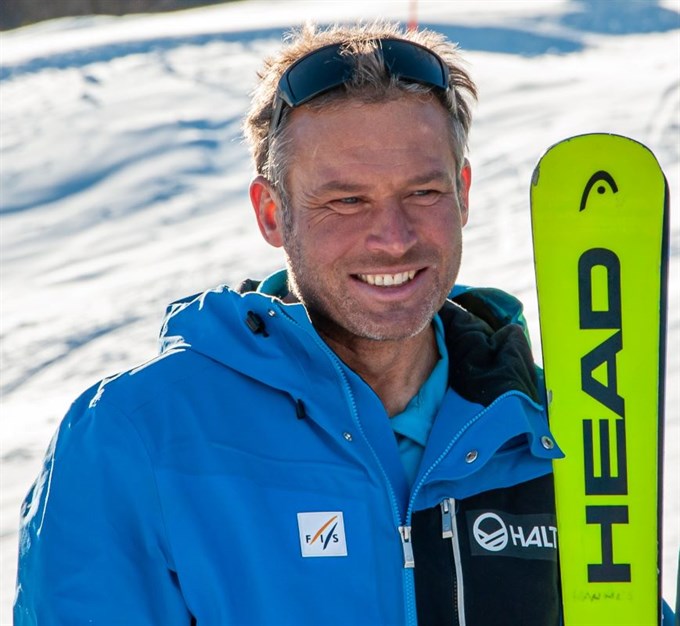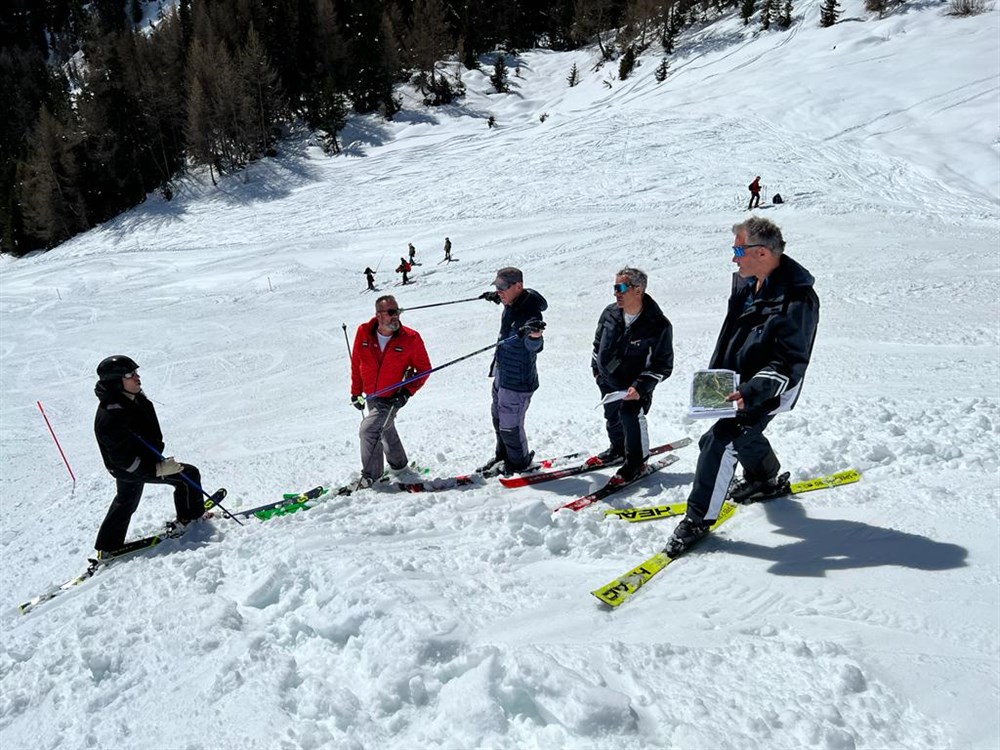THE LEGENDARY NATIONALE PISTE GETS A GREEN LIGHT FROM THE FIS
The Nationale piste in Crans-Montana has recently successfully passed its FIS inspection. Hannes Trinkl, the International Ski Federation race director for speed events, and his assistant Raimund Plancker have given the green light to the legendary Crans-Montana piste to host the World Championship men's competitions. Stéphane Robyr, technical head of the Crans-Montana World Cup ski races, piste manager Patrice Morisod, Bertrand Cassignol, CEO of the CMA ski lifts, and also Daniel Bollinger, director of the Swiss-Ski World Championships, were also present for the piste inspection.
However, artificial snow still needs to be installed on the upper section of the course, various fibre optic cables need to be laid and minimal corrections to the piste need to be made in order to meet all the safety criteria required to host World Championship events.
The Nationale is legendary. Its rich history is proof of this. In 1940, the Swiss downhill championships were due to be held here, with a start at Cry d'Er and a finish just above the Clinique Lucernoise, however this had to be cancelled due to the mobilisation of the Swiss army at the start of the Second World War.
Between 1942 and 1966, the Nationale was the setting for the annual Mont Lachaux Trophy. The men started from Bellalui. Local skier Georges (Collo) Felli, who was also a ski jumper and ice hockey player, held the course record for a long time. In the last edition of the competition, which was won by the German Franz Vogler, a certain Bernhard Russi, aged 18, finished in 20th place after starting with race number 80. Famous names appear on the roll of honour for race winners: Madeleine Berthod, Erika Netzer, Brigitte Lafforgue and Annerösli Zryd in the women's category, Edy Rominger, Stein Eriksen, Chiharu Igaya, Edy Reinalter, Christian Pravda, Egon Zimmermann and Karl Schranz in the men's. The Mont Lachaux Trophy disappeared when the municipality of Crans-Montana withdrew the 30,000 francs that they contributed towards it each year (!).
In 1977, the Women's Alpine Skiing World Cup made its first stop in Crans-Montana. Austria’s Brigitte Totschnig won the downhill on the Nationale, in front of Evi Mittermaier, Anne-Marie Pröll and Marie-Therese Nadig. France’s Perrine Pelen triumphed in the slalom ahead of Lise-Marie Morerod and Fabienne Serrat. The Nationale Ski Area hosted the White Circus five more times (three times for the men, twice for the women) up until the unforgettable 1987 FIS Alpine World Ski Championships on the Haut-Plateau. The Lauberhorn downhill and slalom, which had to be cancelled due to lack of snow, were held in Crans-Montana.
The new era of World Cup races, relaunched by Marius Robyr and Hugo Steinegger, began with women's competitions in 2008 and 2010 on the Nationale, followed by three men's races in 2012. From 2014 onwards, the Crans-Montana stage has become a classic on the women's World Cup calendar on the attractive Mont Lachaux piste – the site for the women's races in the '87 WC. The piste has been renovated and modernised in several stages, thanks to major investment. It now meets the requirements for the 2027 World Championships, as does the Nationale. Both pistes were approved once again by the FIS in 2022.
The Nationale slope has also undergone several major facelifts, notably in 1971, to create the course for the 1987 World Championships, and in 2007, in order to be able to host the Alpine Skiing World Cup again on the Haut-Plateau from 2008. In the autumn of 2021, extensive work was carried out on the upper part of the course between the start at Bellalui and Cry d'Er.
Hannes Trinkl praised the work carried out during the course inspection. “The Nationale is perfectly suited to the technical requirements of modern ski racing. It is also truly spectacular, both for the spectators on site and watching on television” said the former Austrian downhill world champion (2001) and bronze medallist at the 1998 Olympic Games in Nagano/Japan. The Nationale is a real challenge for competitors, because of its 3,670 metre length. The start is at an altitude of 2'520 metres and the finish at 1'545 metres, a difference in altitude of 981 metres. The estimated race time is between 2'10 and 2'15.

